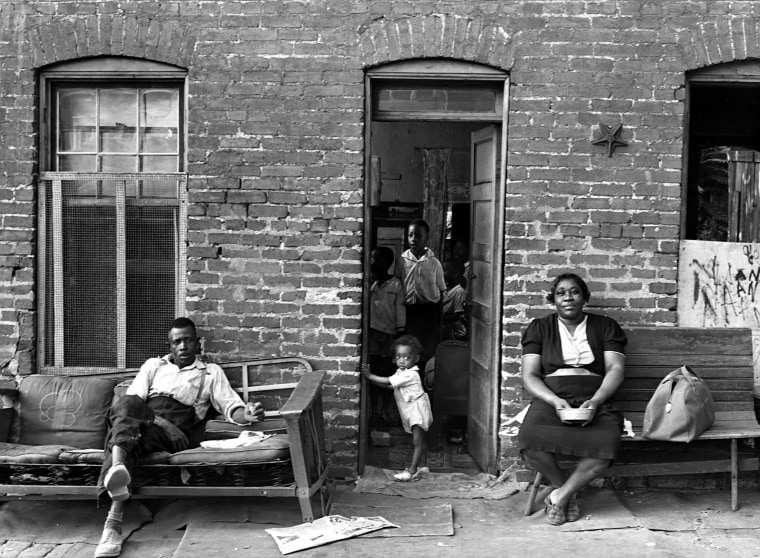A recent report from The Markup, co-published with The Associated Press, reveals what many Americans already know: Race plays a significant factor in the home-lending industry. Based on information gathered in 2019, the new report reveals that
People of color, regardless of their economic backgrounds, were denied applications for mortgages at a higher rate than white Americans.
Latino, Asian and Pacific Islander, Native American and Black applicants experienced discrimination during the mortgage approval process, but Black applicants encountered the most. According to the report, Black people were 80 percent more likely to be denied a mortgage loan than a white applicant with a similar profile. In some places, the pattern of exclusion is even more startling: Black applicants, in Chicago, for example, were 150 percent more likely to be denied than white counterparts with the same credit score, same debt as percentage of income, and looking to borrow the same percentage of a property’s value.
The current rate of mortgage denials — and the interrelated patterns of housing discrimination and exclusion — is rooted in American history. Discrimination against Black Americans applying for mortgage loans is not new. In the 1930s, when the federal government created the Home Owners’ Loan Corporation (HOLC) to make it easier for Americans to own homes, Black Americans were purposely excluded. The Servicemen’s Readjustment Act of 1944 — most commonly known as the GI Bill — replicated the same pattern of racial discrimination in housing. The GI Bill helped millions of veterans purchase homes — 40 percent of the mortgages issued in 1946 and 1947 were guaranteed by the Veterans Administration. Yet, those low-interest home loans went primarily to white Americans because banks consistently refused mortgages to Black applicants.
Despite the passage of the 1968 Fair Housing Act and the 1974 Equal Credit Opportunity Act, racial disparity in home ownership persists, and the ongoing home-lending discrimination captured in The Markup/AP report underscores the limitations of federal housing policies to address housing and lending discrimination.
The Black homeownership rate today is 30.5 percent lower than the white homeownership rate and 22 percent lower than the national homeownership rate of 63.7 percent. According to a 2019 National Association of Realtors study, Black homebuyers bought homes at the lowest median price ($228,000) compared to white and Hispanic homebuyers.
What we’re seeing now are the vestiges of the housing discrimination that began during Jim Crow. During the Great Depression, which left an estimated 15 million Americans unemployed in March 1933, a major component of Franklin D. Roosevelt’s New Deal was the federal government’s attempts to boost the private housing market with the creation of the HOLC in 1933 and the Federal Housing Administration (FHA) in 1934. The HOLC provided low-interest loans to homeowners at risk of losing their homes to foreclosure, and the FHA provided government support to long-term mortgages, which allowed lenders to extend the terms of repayment up to 30 years.
These developments more than doubled home ownership in the United States over the next few decades. According to the historian Thomas J. Sugrue, “In 1930, only 30 percent of Americans owned their own homes; by 1960, more than 60 percent were homeowners. Home ownership became an emblem of American citizenship.”
Federal appraisers penalized neighborhoods with a strong Black presence, assigning them the lowest rating of D.
But Black Americans and other people of color were largely restricted from accessing the benefits of federal housing programs. As Sugrue details in his groundbreaking book, "The Origins of the Urban Crisis," the HOLC graded neighborhoods on various factors, including residents’ economic class and the age of the buildings. One of the most significant factors, however, was the presence of Black residents. Federal appraisers penalized neighborhoods with a strong Black presence, assigning them the lowest rating of D, indicating that the residents were considered a risk for mortgage loans. This made it extraordinarily difficult for them to receive federal housing assistance. On the color-coded maps used by federal agencies, these areas were denoted with the color red, the origin of the term “redlining.
Sugrue found that in Detroit, every neighborhood with “even a tiny African American population” received a D rating from the HOLC. As Andre M. Perry and David Harshbarger explain in a 2018 Brookings Institution report: “Together with racially restrictive housing covenants that prohibited Black Americans from buying certain properties, redlining prevented generations of families from gaining equity in homeownership or making improvements to homes already owned.”
Then, as now, Black Americans faced a number of barriers when attempting to secure these mortgage loans. According to historian Ira Katznelson, author of "When Affirmative Action Was White," federal policies such as the GI Bill served to widen the racial wealth gap in America rather than help close it.
Despite other efforts to address housing discrimination over the last 80 years, The Markup/AP’s recent report reveals that many of the same exclusionary practices from the 20th century remain firmly place. Access to quality housing has not improved, and there are still many barriers that people of color face when seeking mortgages. The mechanisms might have changed over time, but the end result is the same: Homeownership for Black Americans and other people of color is an uphill battle. And it’s unlikely to change anytime soon — especially if the federal government doesn’t make change a priority.

